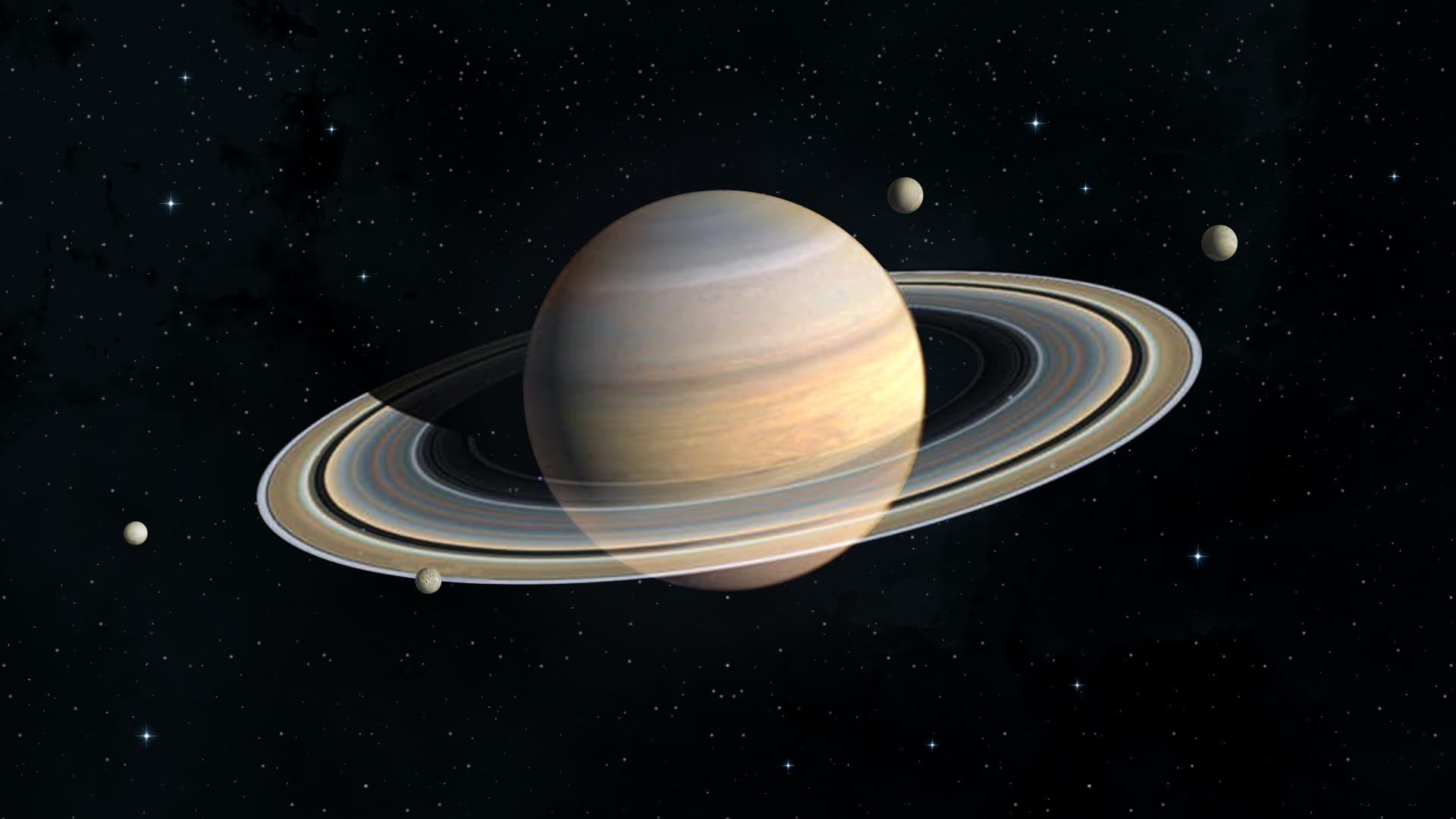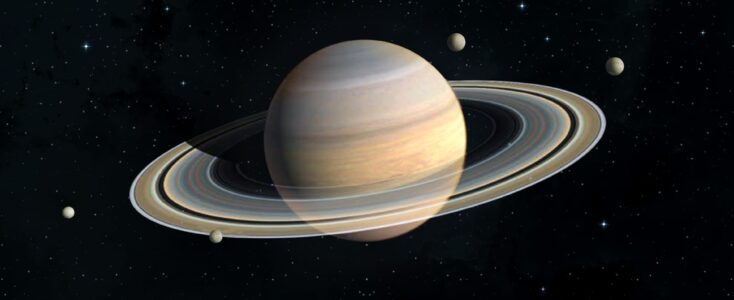Saturn, the second-largest planet in our solar system and arguably the most beautiful, has captivated stargazers for centuries. Its majestic rings, first observed by Galileo in 1610, make it stand out among the gas giants. With technological advancements and a growing interest in space observation, it’s easier than ever to catch a glimpse of Saturn and its stunning rings from your backyard or through a telescope. But how can you best view Saturn’s rings and moons? Let’s dive into this detailed guide to help you observe this distant planet like a pro.
Understanding Saturn: The Basics
Before getting into the specifics of how to view Saturn, it’s important to understand what makes this planet so special. Saturn is the sixth planet from the Sun, located about 1.4 billion kilometers away. It is composed mostly of hydrogen and helium and is known for its spectacular ring system, which consists of icy particles ranging from tiny grains to large chunks.
Saturn also has a rich collection of moons—83 confirmed, with the most famous being Titan, the second-largest moon in the solar system. Other notable moons include Enceladus, which has ice geysers that shoot water vapor into space, and Mimas, whose large crater makes it resemble the Death Star from Star Wars.
When is the Best Time to View Saturn?
Saturn is visible to the naked eye from Earth, but there are specific times during the year when it is at its brightest and most detailed.
Saturn’s Opposition
The best time to view Saturn is during its opposition. Opposition occurs when Saturn is directly opposite the Sun in the sky, meaning the Earth is between the two. During opposition, Saturn appears larger, brighter, and closer to Earth, making it an ideal time to observe its rings and moons. Opposition occurs approximately once a year, so be sure to mark it on your stargazing calendar.
In 2024, Saturn will be in opposition on July 25, and in 2025, it will occur on August 14. This is when Saturn will be at its peak visibility for stargazers in the Northern and Southern Hemispheres.
Other Factors Affecting Visibility
- Clear Skies: Viewing conditions improve dramatically when the sky is free from clouds and atmospheric disturbances.
- Low Light Pollution: Light pollution from urban environments can hinder your ability to see faint celestial objects like Saturn’s moons. Try to observe from a rural or dark-sky location.
- Steady Atmosphere: The steadier the atmosphere, the sharper Saturn will appear in your telescope. Conditions like strong winds or heat waves can create turbulence, blurring your view.

Equipment for Viewing Saturn
While Saturn is visible to the naked eye, you’ll need some specialized equipment to see its rings and moons in detail. Let’s look at the different tools you can use to enhance your viewing experience.
1. Binoculars
If you’re a casual stargazer or just starting, binoculars are a good option. A pair of 7×50 or 10×50 binoculars will reveal Saturn as a small, bright disk in the sky. You won’t be able to make out the details of the rings or moons, but you will clearly see Saturn’s position in the night sky. Holding binoculars steady, ideally using a tripod, will give you the best results.
2. Telescopes
To fully appreciate Saturn’s beauty, a telescope is the best tool. Here are the key factors to consider:
- Aperture: The larger the aperture (the diameter of the telescope’s primary lens or mirror), the more light it can collect, making faint objects like Saturn’s moons easier to see. For Saturn, a telescope with an aperture of at least 75mm (3 inches) is ideal. Larger apertures, such as 150mm (6 inches) or more, will provide even better detail, revealing the planet’s intricate ring system and surface bands.
- Magnification: Higher magnifications allow you to see more details of Saturn and its rings. A magnification of 75x to 150x is recommended for viewing Saturn’s rings, while magnifications of 200x or more will help you see finer details, such as the Cassini Division (the gap between Saturn’s main ring system) and some of its larger moons.
- Mount: Stability is crucial for viewing Saturn’s rings and moons. A shaky mount can ruin the clarity of your observation. Make sure your telescope has a sturdy mount, preferably an equatorial one that can track celestial objects as they move across the sky.
3. Filters
Using filters can enhance your view of Saturn. Color filters help to highlight specific features, such as atmospheric bands on the planet or finer details in the rings.
- Yellow and orange filters can help enhance Saturn’s cloud bands.
- Polarizing filters can reduce glare and improve contrast, especially during brighter views of the planet.
Observing Saturn’s Rings
Saturn’s rings are what set it apart from any other planet in the solar system. They span over 270,000 kilometers in diameter but are only about 10 meters thick! Composed mostly of water ice with traces of rock, these rings reflect sunlight, giving Saturn its brilliant appearance.
Structure of the Rings
Saturn’s ring system is divided into several distinct sections:
- A Ring: This is the outermost of Saturn’s large, bright rings. It is separated from the B Ring by the Cassini Division, a dark gap that can be observed in telescopes with apertures of 100mm or more.
- B Ring: The B Ring is the brightest and widest of Saturn’s rings, and with a good telescope, you’ll see this as the most prominent part of the ring system.
- C Ring: Sometimes called the Crepe Ring, this is a fainter and narrower ring that’s closer to Saturn. It is best observed through larger telescopes.

The Cassini Division
One of the most sought-after features of Saturn’s rings is the Cassini Division, a dark gap between the A and B rings. This gap is about 4,800 kilometers wide and was discovered by Giovanni Cassini in 1675. To observe the Cassini Division, you’ll need a telescope with an aperture of at least 75mm, although larger telescopes (150mm and above) will give you the clearest views.
Ring Tilt and Visibility
Saturn’s rings don’t always look the same to us from Earth. Over a period of 29.5 years, Saturn’s rings go through a cycle of tilting as the planet orbits the Sun. Sometimes, we see the rings fully open, while at other times, they appear almost edge-on, making them difficult to spot.
During opposition, the rings are usually tilted toward Earth, offering a more spectacular view. As of 2024, Saturn’s rings will be slightly tilted, giving us a nice view, but over the next few years, they will appear more edge-on.
Viewing Saturn’s Moons
While Saturn’s rings are a highlight, its moons also offer a fascinating viewing experience. Several of Saturn’s moons are visible through amateur telescopes, with the most prominent being Titan, Rhea, Dione, Tethys, Enceladus, and Mimas.
Titan: The Largest Moon
Titan is Saturn’s largest moon and one of the most interesting objects in the solar system. It has a thick atmosphere, composed mostly of nitrogen, and even has lakes of liquid methane on its surface. Titan is easily visible through a small telescope and appears as a bright dot near Saturn. In larger telescopes, you might be able to distinguish its orange hue caused by its thick, smoggy atmosphere.
Rhea, Dione, and Tethys
Rhea, Dione, and Tethys are medium-sized moons of Saturn that are also visible in small telescopes. These moons orbit closer to Saturn than Titan, so they may appear in close proximity to the planet during observation. While they don’t offer the same level of detail as Titan, spotting these moons can be a rewarding experience, as they constantly change positions in relation to Saturn.
Enceladus: A Moon of Ice Geysers
Enceladus, one of Saturn’s most intriguing moons, is famous for its icy geysers that shoot water vapor into space. Although it’s much smaller than Titan, Enceladus is visible through medium-sized telescopes (100mm aperture or more) under good conditions. Look for this icy world close to Saturn during your stargazing sessions.
Mimas: The Death Star Moon
Mimas is another small moon that orbits close to Saturn. It’s known for its massive Herschel Crater, which gives it a resemblance to the Death Star from Star Wars. Mimas can be challenging to observe due to its small size, but with a telescope of 150mm or larger, you should be able to spot it.
Capturing Saturn: Astrophotography Tips
If you want to capture your view of Saturn through your telescope, astrophotography is the way to go. Here’s how you can get started:
1. Smartphone and Adapter
One of the easiest ways to photograph Saturn is by using a smartphone adapter for your telescope. This accessory holds your phone camera in place over the eyepiece, allowing you to capture images through the telescope.
2. Dedicated Cameras
For more serious astrophotography, consider using a dedicated planetary camera or a DSLR. These devices can capture high-resolution images and allow you to stack multiple frames to reduce noise and increase detail.
3. Software for Stacking and Processing
Astrophotographers often use software like RegiStax or AutoStakkert! to stack multiple images of Saturn and its rings. Stacking helps to smooth out atmospheric distortions, giving you a clearer, sharper final image.
Conclusion
Saturn is one of the most rewarding planets to observe in the night sky. Whether you’re gazing at its rings or tracking its moons, the sight is nothing short of breathtaking. By using the right equipment, choosing the best time for observation, and understanding what you’re looking at, you can get the most out of your stargazing experience. So, grab your binoculars, set up your telescope, or simply step outside on a clear night to marvel at the beauty of Saturn.

